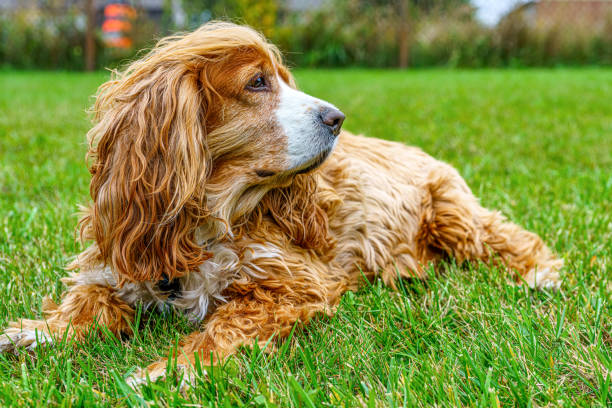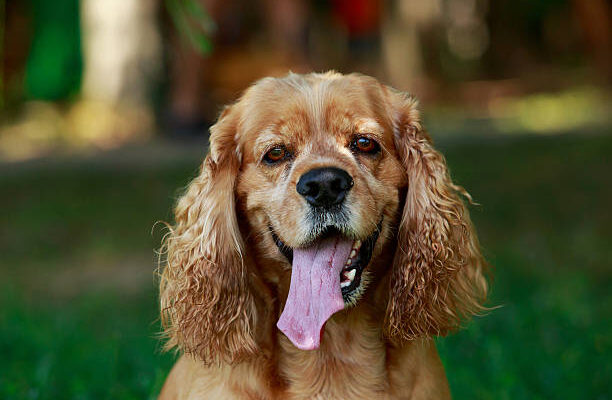People across the globe love Cocker Spaniels for their enchanting features and unique disposition. Despite its background as a hunting dog in English countryside the Cocker Spaniel smoothly transitioned to become part of households and show rings while performing therapy work. This guide covers every aspect of owning a Cocker Spaniel including its remarkable origins and required training, grooming, healthcare, and the ideal living space.
Table of Contents
- Introduction to Cocker Spaniels
- History and Origin
- Physical Characteristics
- Personality and Temperament
- Training a Cocker Spaniel
- Exercise and Activity Needs
- Nutritional Requirements and Diet
- Grooming and Hygiene
- Common Health Issues and Preventive Care
- Socialization and Behavior
- Living Conditions and Adaptability
- Fun Activities and Games
- Conclusion
Introduction to Cocker Spaniels
The Cocker Spaniel has a medium size form with a gentle face and soft hair that pairs naturally with a happy spirit. This dog from the sporting group possesses natural hunting skills and strong motivation to make its owner happy. Cocker Spaniels make fantastic loyal pet choices through their happy nature and friendly approach. Having the Cocker Spaniel attached to your daily life brings it the greatest joy whether you engage in physical exercise, rest or play with your children together.
History and Origin
Origins in 14th Century Europe
European spaniel-type dogs served as ancestors of the Cocker Spaniel before hunters in the 1800s developed two distinct varieties. During the 1800s British spaniel breeders started splitting the spaniel breeds into different groups according to their primary hunting functions. Hunters developed the term “Cocker Spaniel” when woodcock hunting became popular for these smaller hunting breeds.
English vs. American Cocker Spaniel
There are two main types of Cocker Spaniels:
- English Cocker Spaniel – Slightly larger and bred primarily for hunting.
- American Cocker Spaniel – Smaller, with a domed head and longer coat, developed in the United States and bred mainly for companionship and shows.
Fun Fact:
For many years the American Cocker Spaniel reigned as the favorite dog breed in America and viewers fell in love with the breed during its film roles in Lady and the Tramp.
Physical Characteristics
Size and Build
- Height:
- Males: 14.5–15.5 inches
- Females: 13.5–14.5 inches
- Weight: 20–30 pounds
- Build: Compact, well-balanced, and muscular
Coat and Colors
People recognize Cocker Spaniels for their flowing long soft hair that appears in many different colors.
- Solid (black, buff, red, brown)
- Parti-color (two or more solid colors, one being white)
- Roan, merle, or tan-point markings
Coat Texture
- Silky, flat or slightly wavy
- Dense undercoat provides warmth and protection
Personality and Temperament
What Are Cocker Spaniels Like?
The Cocker Spaniel lives with a happy and perceptive nature alongside strong feelings of love. These dogs have energetic spirits and need to participate in family activities as part of their happy way of living. These dogs sense easily what pleases them and dislike harsh treatment which affects their emotional health.
Are Cocker Spaniels Good Family Dogs?
Absolutely. With right socialization Cockers make good family companions and align with other household pets. Their relaxed personality suits every type of household.
Are Cocker Spaniels Good Watchdogs?
Since Cocker Spaniels are easygoing and friendly by nature they do not create an imposing security presence. One does not choose them for security yet picks them as a loyal companion.
Training a Cocker Spaniel
Intelligence and Trainability
The Cocker Spaniel breed excels at following instructions when positive feedback methods are applied during training. Food rewards help them learn quick and they do well in obedience events.
Basic Training Tips:
Start training your Cocker Spaniel during the 8 to 12-week period.
Give them rewards plus feedback and games during their development process
Be gentle but consistent
These pups need soft guidance since they feel emotional impacts from heavy-handed discipline
Socialization
Early introduce your Cocker Spaniel to different environments and social settings. Social events for puppies improve their mindbalance and stay friendly throughout their adult years.
Exercise and Activity Needs
Daily Exercise Requirements
For their well-being and contentment Cocker Spaniels require moderate daily physical activities. Keep your Cocker Spaniel active between 45 and 60 minutes every day.
Exercise Ideas:
- Daily walks or jogs
- Free play in a securely fenced yard
- Trips to the dog park
- Fetch or swimming sessions
Mental Stimulation
Mental exercise is equally important. Cocker Spaniels take pleasure in solving brain games and problem-based tasks.
Brain Boosters:
- Scent games
- Puzzle toys
- Trick training sessions
- Hide-and-seek with toys
Nutritional Requirements and Diet
Recommended Diet
A Cocker Spaniel’s diet should be balanced and formulated to meet their size and energy levels. Look for dog food with:
- High-quality protein (chicken, salmon, turkey)
- Healthy fats (omega-3s for coat health)
- Whole grains or grain-free options based on tolerance
- Fresh vegetables and fruits for vitamins and fiber
Feeding Schedule
- Puppies: 3–4 meals daily
- Adults: 2 meals daily
- Use a measuring cup to prevent overfeeding
Foods to Avoid:
- Grapes, raisins, chocolate
- Onions and garlic
- Excess table scraps or high-fat treats
Grooming and Hygiene
Grooming Routine
The Cocker Spaniel needs regular coat care to avoid matting and keep its hair smooth.
Weekly Routine:
- Brushing: 3–4 times per week
- Bathing: Every 4–6 weeks
- Ear Cleaning: Weekly (to prevent infections)
- Nail Trimming: Every 2–3 weeks
- Teeth Brushing: 2–3 times per week
Professional Grooming
Most owners bring their Spaniels to professional groomers every 6–8 weeks to get their tail, ear, and genital areas properly cut.
Common Health Issues and Preventive Care
Common Health Concerns
The Cocker Spaniel breed stays healthy yet experiences certain conditions like ear infections and allergic responses:
- Ear infections (due to floppy ears)
- Eye conditions (cataracts, glaucoma)
- Hip dysplasia
- Allergies
- Autoimmune disorders
Preventive Care
- Regular vet check-ups
- Annual vaccinations
- Monthly flea/tick and heartworm preventatives
- Clean ears and check for moisture or odor
- Maintain a healthy weight to prevent joint strain
Socialization and Behavior
Tips for Socializing Your Cocker Spaniel
- Start as early as possible
- Introduce to new people and environments regularly
- Attend puppy training classes
- Use treats to reward calm and curious behavior
- Stay positive and encouraging
Common Behavioral Traits
- Affectionate: Forms deep bonds with family
- Sensitive: Responds strongly to tone and treatment
- Playful: Always ready for a game or adventure
- Alert: Aware of surroundings and quick to bark
- Adaptable: Thrives in different home environments when properly trained
Living Conditions and Adaptability
Best Living Environments
With exercise Cocker Spaniels can adapt to any home type.
Ideal Homes:
- Apartments (with daily outdoor time)
- Suburban homes with fenced yards
- Families with time for grooming and companionship
Climate Sensitivity
- Cold Weather: Protect with dog coats and avoid long exposure
- Hot Weather: Provide shade, water, and avoid midday walks
Fun Activities and Games
Games stimulate Cocker Spaniels both mentally and physically because they enjoy trying different activities.
Games to Play:
- Fetch: Perfect for their retrieving instincts
- Tug-of-War: Great bonding exercise
- Agility Training: Excellent for energy release
- Scent Games: Hide treats around the house
- Interactive Toys: Keep them entertained when alone
Conclusion
The Cocker Spaniel displays a wonderful combination of beauty and excitement that people fall in love with immediately. People and families who meet their grooming and activity requirements will find a perfect pet in these dogs thanks to their devoted nature and playfulness. As you take care of your Cocker Spaniel around the home or let them play outside they will remain faithful to you for the whole life.
Key Takeaways
Spaniels demonstrate natural friendliness and love for training tasks.
They need regular upkeep of their coat plus moderate physical activities every day.
Training Cocker Spaniels at an early age plus socializing them leads to better behavior.
Their tender temperament gets along better with rewarding encouragement.
Cocker Spaniels thrive under the care of family units or single people planning to give them enough attention.




